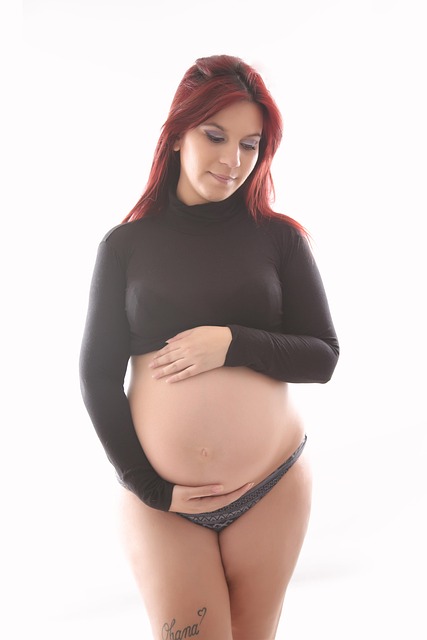Mike stormed through the door after a trip to the pharmacy, his frustration palpable. The cashier had cheerfully asked, “Is this a good thing?” clearly unaware of the weight of the situation. His anger was palpable, but it was the anguish in his eyes that truly struck me. I had sent him to grab a stack of pregnancy tests after putting our kids to bed, hoping against hope that the results would confirm I wasn’t expecting. Yet, I knew that until my period finally arrived, I would be testing every time I went to the bathroom, desperately seeking peace of mind. The moment a plus sign appeared on one of those tests, I knew I would be scheduling an abortion.
In the years we’ve been together, we’ve navigated two pregnancies and welcomed three children, the youngest being just four years old. While another baby would undoubtedly find a place in our hearts and home, the physical toll of pregnancy is daunting. We both understood what my pregnancy could entail: prolonged bed rest, anemia, unmanageable pain, a likely emergency C-section, potential postpartum depression, and most alarmingly, a heightened risk of cancer.
Most people are aware of the common pregnancy restrictions—like avoiding raw fish and deli meats—but they often overlook the reasons behind these precautions. A pregnant body undergoes profound transformations, both visible and hidden. Hormones reshape the brain, bones adapt, the lymphatic system adjusts, and the immune system is intentionally suppressed to accommodate the developing fetus. This suppression, however, poses risks. While a healthy immune system prevents atypical cells from proliferating and forming cancers, a pregnant immune system might not be as vigilant.
Some anti-abortion advocates claim that abortion increases the risk of breast cancer, but it’s actually pregnancy that can escalate cancer risks, affecting various types such as breast cancer, cervical cancer, and even melanoma. During my last pregnancy, I had six cancerous or precancerous moles removed and several polyps taken from my colon. The thought of melanoma potentially spreading through my body while I’m pregnant was terrifying.
My family has already faced the devastation of cancer. We strive to protect one another from its risks—whether it’s avoiding carcinogens or advocating for clean water. Yet, none of those precautions would matter if my pregnancy test turned blue.
In a quiet moment, Mike and I exchanged glances, both grappling with the reality of our situation. He had wished the doctor had offered a permanent solution during my last C-section, while I recalled a friend’s wife who tragically passed away shortly after giving birth, her cancer having returned unnoticed during her pregnancy. She never had the chance to take her newborn home; my heart ached for her family.
Birth control isn’t foolproof. Mike underwent a vasectomy, but complications during the procedure increased the risk of failure. I have a medical condition that prevents me from using hormonal birth control, plus an allergy to copper. Even with an IUD or the pill, the risk of pregnancy remains, and my period was two weeks late. Stress from juggling two jobs and three kids only compounded my worries.
Mike tossed the bag of pregnancy tests onto the coffee table, cursing the oblivious cashier who had questioned his excitement. I held his hand, and we both knew that while we could technically afford another child, the reality of my health risks and the potential for a high-risk pregnancy loomed large.
We would love another child, but the question lingered: how long could I withstand the aggressive cancer that could reinvigorate itself during my pregnancy? How long could my husband, a cancer survivor himself, cope with the uncertainty of my health while raising our children alone?
My kids need me—specifically me. They rely on my love and support, which provides them with a sense of security. I can’t bear the thought of leaving them, especially not to face a world without their mother. I have always strived to be a good parent, nurturing, compassionate, and protective. The image of them watching me fight a losing battle against melanoma, while they’re still so young, is something I cannot accept.
The reality is, many women in their 30s, like me, face similar decisions. The healthcare system often fails to account for situations like mine, where a pregnancy might not pose an immediate danger to my life but threatens it nonetheless.
I’m just like any woman nervously peeing on those little plastic sticks, bracing for the possibility of a second line. The love we have for our children is immense, but the horror of having to terminate a pregnancy we would cherish pales in comparison to the fear of leaving our current kids behind forever because of a twist of fate. Being a good mother should never require sacrificing oneself to bring another child into the world.
As Mike settled beside me on the couch, he brought out a box of cookies. We munched together, wrapped in each other’s arms, sharing the weight of our limbo. Even if my health were not at risk, the balance of our family could still be disrupted by another child. What if they had needs that stretched me too thin, or if I struggled with postpartum depression and found myself unable to give them the love they deserve?
I’m not a teenager grappling with the consequences of my choices; I’m a grown woman, and this is my body, my choice. Becoming a mother was never meant to be easy, but I didn’t anticipate it would be this hard.
In summary, the decision to consider abortion stems from a complex interplay of physical, emotional, and familial factors. Women like me face difficult choices, weighing the risks of pregnancy against the need to nurture the children we already have. The conversation around reproductive health must acknowledge these real-life dilemmas, recognizing that the choice to terminate a pregnancy can stem from a place of love and responsibility.
Keyphrase: abortion decision for health reasons
Tags: home insemination kit, home insemination syringe, self insemination
